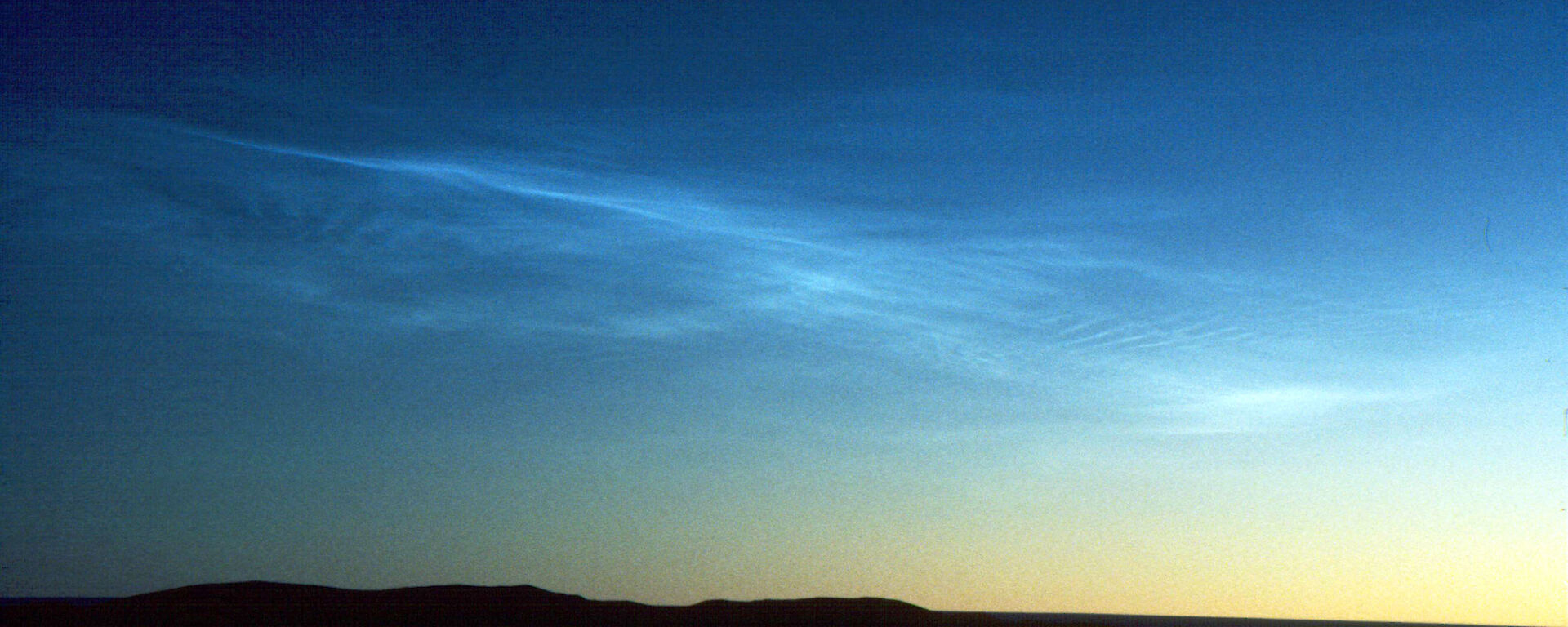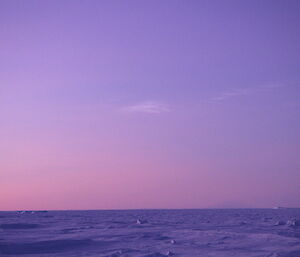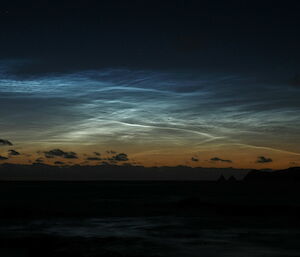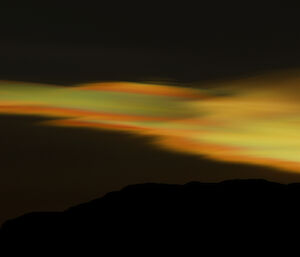Noctilucent clouds are only visible when the sun is shining on them (at about 83 km altitude), and not on the lower atmosphere (when the sun is between 6 and 16 degrees below the horizon). They form in the polar mesopause – the coldest region of the Earth’s atmosphere. The polar mesopause reaches temperatures as low as −140°C.
Noctilucent clouds were first reported in 1885 when they were independently observed in Germany and Russia. This was two years after the volcanic explosion of Krakatoa in the Straits of Java.
It was thought that this initial observation was due to the increased number of people watching the twilight skies. Observers were attracted by spectacular displays, created by the globally distributed volcanic debris of Krakatoa.Another theory was that water vapour, injected into the upper atmosphere by the volcano, ultimately reached the cold, dry upper mesophere creating the clouds.
Subsequent observations have proved that noctilucent clouds are not solely related to volcanic activity. In fact, their volcanic association is now scientifically contentious.
It has been alternatively claimed that the appearance of noctilucent clouds is the earliest evidence of anthropogenic climate change. Noctilucent cloud observations from north-west Europe over the last 30 years show an increasing trend in the number of nights on which the clouds are observed each summer season, superimposed on a decadal variability that appears to be solar-cycle related. Competing explanations for this increase focus on excessive greenhouse cooling of the middle atmosphere, or increased water vapour linked to increased methane release associated principally with intensive farming activities.
Noctilucent clouds have been observed thousands of times in the northern hemisphere, but less than 100 observations have been reported from the southern hemisphere. This could be due to inter-hemispheric differences (temperature and/or water vapour) in the atmosphere at these altitudes. Or, the difference could be due to the lack of observers and poorer observing conditions in southern latitudes. This is a subject of Australian Antarctic Division study.






